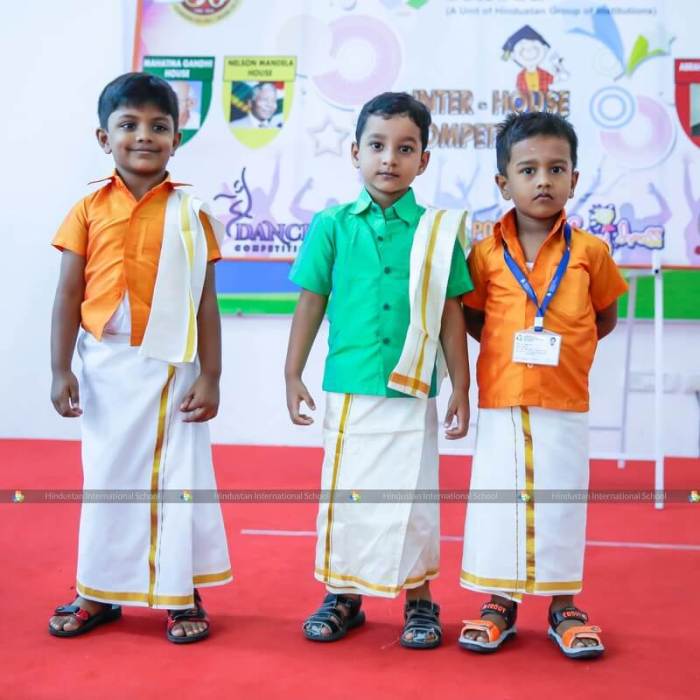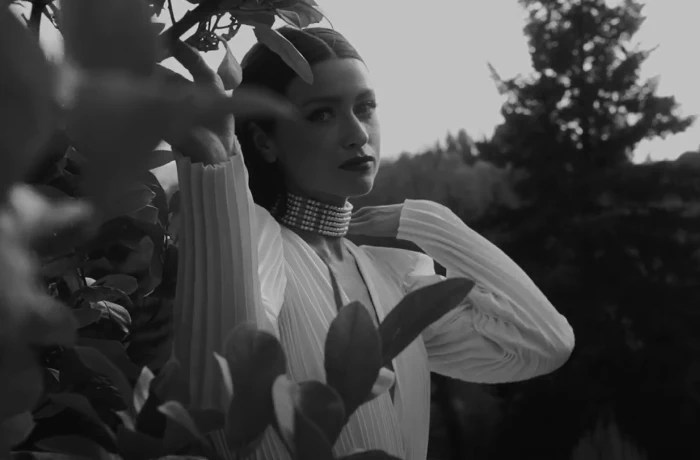The Phenomenon of “Bride Wars”

Source: hindustaninternationalschools.in
Wedding dress bride wars – The age-old adage “two brides, one wedding dress” is often a comedic trope, but the reality of wedding planning conflicts, particularly those surrounding the dress, is frequently less humorous and more…stressful. The pressure to create a “perfect” day, coupled with the emotional investment in the wedding, often fuels tensions between brides and their support systems. This exploration delves into the common sources of conflict and offers strategies for navigating these tricky waters with grace (and perhaps a little wine).
Social Dynamics and Wedding Dress Conflicts
Wedding planning, particularly dress selection, highlights pre-existing family dynamics and friendships. Differing opinions on aesthetics, budgets, and traditions can easily escalate into full-blown disagreements. The bride’s desire for autonomy clashes with well-meaning (but often intrusive) advice from mothers, mothers-in-law, bridesmaids, and even distant relatives. This inherent power struggle over a single garment can be surprisingly potent.
Common Sources of Tension Regarding Wedding Dresses
Disagreements over wedding dress styles, budgets, and the overall wedding aesthetic are frequent sources of conflict. The bride’s vision might clash with the expectations of family members, leading to tense discussions and hurt feelings. Adding fuel to the fire is the pressure to conform to societal trends while maintaining personal style.
Scenarios Leading to Dress-Related Conflicts
| Source of Conflict | Involved Parties | Dress-Related Issues | Resolution (if any) |
|---|---|---|---|
| Budget Discrepancies | Bride & Mother | Bride wants a designer gown; mother prefers a more affordable option. | Compromise: Bride selects a less expensive designer dress or opts for a high-street gown with custom alterations. |
| Clashing Styles | Bride & Bridesmaids | Bride prefers a classic ballgown; bridesmaids want something more modern. | Compromise: Bride allows bridesmaids to choose within a set of approved styles and colors. |
| Family Interference | Bride & Mother-in-Law | Mother-in-law insists on a specific style or designer, disregarding the bride’s preferences. | Mediation: The bride firmly, yet politely, explains her vision and sets boundaries. |
| Unrealistic Expectations | Bride & Wedding Planner | Bride envisions a dress that is impossible to find within the given timeframe and budget. | Compromise: Wedding planner presents alternative options that align with the bride’s aesthetic while being realistic. |
Wedding Dress Choices and Their Impact: Wedding Dress Bride Wars
The wedding dress is more than just fabric and lace; it’s a reflection of personal style, cultural heritage, and societal pressures. The choice a bride makes often speaks volumes about her identity and aspirations for her wedding day.
Personal Style and Cultural Influences on Dress Selection
A bride’s dress selection reflects her unique personality and cultural background. A bride from a traditional family might opt for a classic, elegant gown, while a bride with a bohemian spirit might choose a flowing, less structured dress. Cultural traditions often dictate certain styles, fabrics, or colors, further shaping the bride’s choices.
Societal Expectations and Trends in Wedding Dress Choices, Wedding dress bride wars
Societal expectations and trends significantly influence wedding dress choices. The media’s portrayal of “ideal” wedding dresses often sets unrealistic standards, putting pressure on brides to conform. Trends in silhouette, fabric, and embellishments change over time, impacting the overall aesthetic of bridal fashion.
Traditional vs. Unconventional Wedding Dresses
Brides choosing traditional wedding dresses often prioritize classic elegance and timeless appeal. These dresses usually feature classic silhouettes like A-line or ballgown styles, often made from luxurious fabrics like silk or satin. In contrast, brides opting for unconventional dresses embrace individuality and self-expression, choosing unique styles, colors, and fabrics that reflect their personality.
Evolution of Wedding Dress Styles (50-Year Overview)
Imagine a visual timeline. The 1970s showcase a shift towards simpler, more flowing silhouettes, often featuring A-line shapes and natural fabrics like chiffon or cotton. The 1980s are defined by dramatic, voluminous styles, with puffy sleeves and elaborate embellishments. The 1990s bring a more minimalist approach, with sleek, body-hugging gowns gaining popularity. The 2000s see a resurgence of romantic styles, featuring lace, embroidery, and delicate details.
The 2010s and beyond are marked by a diverse range of styles, from boho chic to modern minimalist, showcasing a greater acceptance of individuality and self-expression.
The Role of Family and Friends

Source: bridelifestyle.com
Family and friends play a significant role in a bride’s wedding dress journey, but their involvement can be a double-edged sword. While their support is invaluable, unsolicited advice and interference can create unnecessary stress and conflict.
Influence of Family and Friends on Dress Selection
Family and friends often share their opinions, preferences, and even past experiences, shaping the bride’s decision-making process. This can range from subtle suggestions to forceful opinions, influencing the bride’s final choice, sometimes against her wishes.
Unsolicited Advice and Interference
Common instances of unsolicited advice include comments on the dress’s style, fabric, price, and overall suitability. Family members might express strong preferences for specific designers or styles, ignoring the bride’s own taste. Friends might offer well-intentioned but unhelpful suggestions based on their own experiences.
Navigating Conflicting Opinions Gracefully

Source: dreamstime.com
To navigate conflicting opinions, brides need to establish clear boundaries and communicate their preferences assertively yet respectfully. This involves active listening, expressing gratitude for advice while firmly stating their final decision. Seeking mediation from a neutral party can also be helpful in resolving major disagreements.
Effective Communication Techniques for Managing Expectations
- Clearly communicate your vision and preferences from the outset.
- Set boundaries and politely but firmly decline unsolicited advice.
- Express gratitude for their input while maintaining your autonomy.
- Involve trusted family and friends in the decision-making process.
- Schedule dedicated time for dress shopping to avoid rushed decisions.
Budget and Practical Considerations
Budget constraints significantly impact the wedding dress selection process. Balancing personal preferences with financial realities requires careful planning and communication.
Budget’s Influence on Dress Selection
Budget limitations often necessitate compromises. Brides might have to adjust their expectations regarding designer labels, fabric choices, or the overall level of embellishment. This can be a source of stress, especially when the bride’s ideal dress falls outside the allocated budget.
Balancing Preferences with Financial Realities
Finding a balance between personal preferences and budget constraints requires careful planning and prioritization. Brides might need to explore alternative options, such as renting a dress, buying a pre-owned gown, or choosing a less expensive fabric.
High-End Boutiques vs. Budget-Friendly Stores
High-end boutiques offer a wider selection of designer gowns, personalized service, and alterations, but come with a higher price tag. Budget-friendly stores provide more affordable options, but may have limited selections and less personalized service.
Communicating Budget Limitations to Family and Friends
Communicating budget limitations requires tact and diplomacy. Brides should explain their financial constraints clearly and honestly, emphasizing their desire to keep the wedding within a manageable budget without making it seem like a cost-cutting measure. They can offer to compromise on other areas to accommodate their desired dress.
Bridal Shop Experiences and Dress Alterations
The experience of shopping for and altering a wedding dress can be both exciting and stressful. Understanding the potential challenges and knowing how to mitigate them can make the process smoother.
Typical Experiences of Brides Shopping for Wedding Dresses
The process often involves trying on numerous dresses, dealing with potential crowds, and navigating the opinions of family and friends. The pressure to find “the one” can be overwhelming, leading to stress and anxiety.
Challenges During Dress Alterations and Fittings
Alterations can be time-consuming and require multiple fittings. Issues such as unexpected alterations costs, miscommunication with the seamstress, and fitting challenges can add to the stress.
Finding Reputable Bridal Shops and Seamstresses
Thorough research is essential to find reputable bridal shops and seamstresses. Reading reviews, checking references, and visiting shops in person can help brides make informed decisions.
Comparison of Wedding Dress Fabrics
| Fabric | Pros | Cons |
|---|---|---|
| Silk | Luxurious, drapes well, breathable | Expensive, requires delicate care |
| Satin | Shiny, elegant, relatively easy to care for | Can be unforgiving on body imperfections |
| Lace | Romantic, intricate details, versatile | Can be itchy, requires careful cleaning |
| Tulle | Lightweight, airy, creates volume | Can be easily damaged, may require additional support |
Clarifying Questions
What are some common signs that a “bride war” is brewing?
Increased tension, passive-aggressive comments about the dress, unsolicited advice given repeatedly despite the bride’s stated preferences, and open arguments regarding the dress or wedding style are all warning signs.
How can I avoid a “bride war” altogether?
Open communication, setting clear boundaries early in the planning process, involving key family members in the decision-making process in a structured way, and actively seeking their input but maintaining final decision-making authority are key to avoiding conflict.
What should I do if a “bride war” has already started?
Mediate discussions, set aside dedicated time for calm conversation, listen to everyone’s concerns empathetically, and, if necessary, involve a neutral third party to help facilitate communication and find common ground.
What if my budget is significantly lower than my family’s expectations for the wedding dress?
Communicate your budget clearly and early. Explain your financial constraints respectfully, perhaps suggesting alternative ways to contribute to other wedding aspects to show you are still prioritizing the event.
